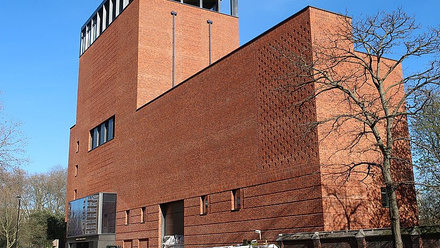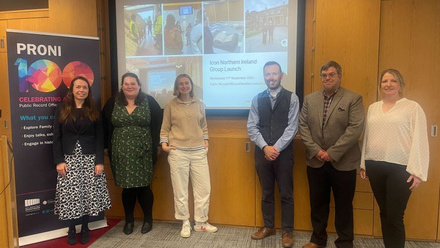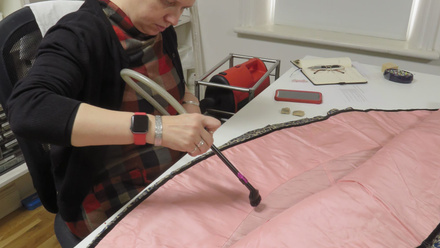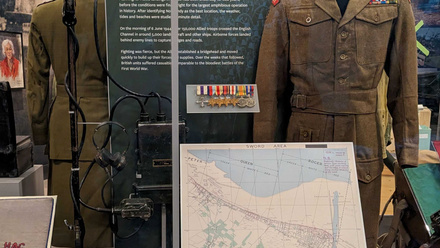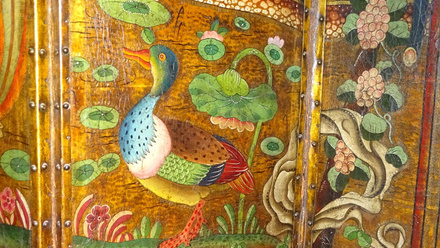From the archives: Conserving The Sunbathers
The sunbathers graced the cover of Icon News in 2017, following their discovery in poor condition. Read our piece from the archives to learn about the work of Icon member Tessa Jackson ACR to conserve and restore the sculpture.
The hunt for lost artwork
The conservation sector typically hits the mainstream headlines only when there is a disaster – when a priceless vase is smashed on display, or when conservation goes wrong in realms abroad. These stories often serve to demonstrate the skill and expertise of conservators in putting the pieces back together, or reinforce rigorous professional standards that underpin the profession in the UK.
However, this year conservation was splashed across the front pages for an entirely different reason. Historic England launched a high-profile campaign to locate lost post-war public works of art, and one of them turned up in a pub garden – coming back to life in the hands of Icon member Tessa Jackson ACR.
The artwork, two coloured composite concrete figures of sunbathers, was sculpted by Peter Laszlo Peri for the Festival of Britain in 1951. After the public appeal, they were found in the garden of the Clarendon Hotel in Blackheath, London, huddled under a blue tarpaulin in a state of advanced decay.
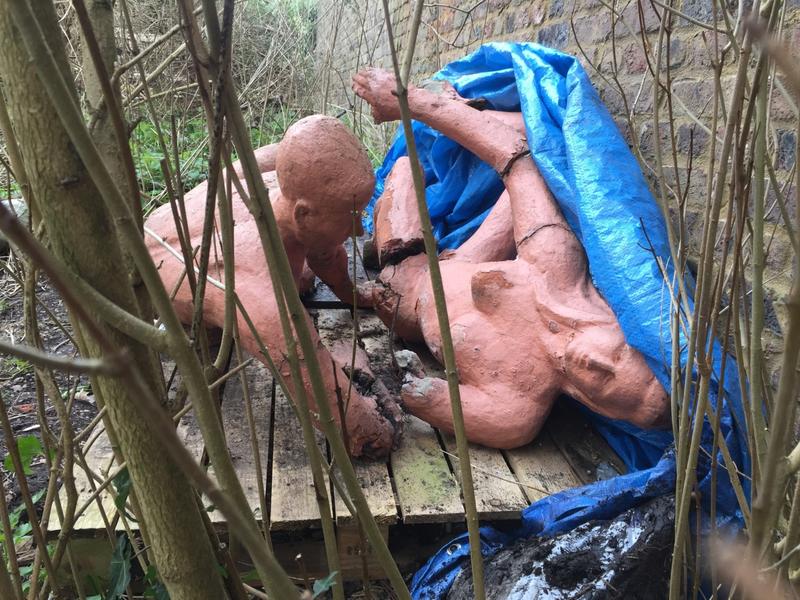
Harnessing public imagination, Historic England launched a crowdfunding campaign to raise funds for their conservation. ‘We wanted to try something new,’ says Celia Knight, Assistant Media Manager at Historic England. ‘The campaign was about public art for public consumption, so we thought this was a project that would fire public imagination and encourage them to contribute.’ The campaign was a huge success, attracting substantial press attention and reaching its target of £15,000 in just five days.
Identifying the problems
Art handling specialists brought the work to the studio. Once there, Tessa conducted a preliminary assessment, which made clear that the challenges would be great. ‘When something is that broken or damaged I really enjoy the challenge,’ she says. ‘Working to solve mysteries around what has happened to it, and understand all the issues that have brought it to this point; conserve and then restore it back into the condition the artist intended. With a project like this it’s about finding the right people with the appropriate skills and bringing them together to collaborate – always a really interesting process to be part of.’
The pub had placed the sculpture in the garden as an ornamental feature, and the figures had been clambered over and enjoyed by countless children, while through the years different paint jobs were applied in a bid to improve the sculpture’s appearance as it degraded. Ad-hoc repairs and accretions mounted with the passing decades; their limbs were repositioned again and again, leaving them cracked and broken. In addition, Peri had originally sculpted the pieces directly on the wall where they were first displayed, building them around a large upright metal pole. But in the pub garden, the figures had reclined horizontally, rather than vertically, and endured sixty years of horizontal pressures for which they were not designed. Over time, their internal iron frames distorted, shifting their postures until they bore little resemblance to their original state.
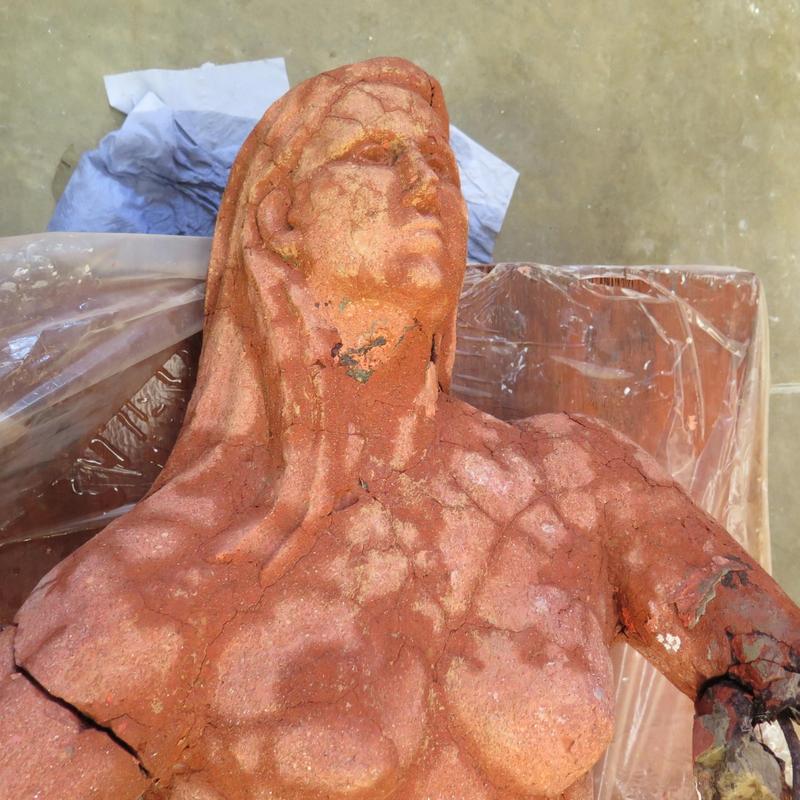
By this time, their internal metal supports had corroded, cracking the concrete and pericrete substrate as they expanded. Once in the studio and stripped of the many paint layers , Tessa found multiple cracks the size of 50p coins, and in many areas the metal armature expanded so much that ‘it was exploding out of the surface of the pericrete’ – shedding parts of the work into dozens of small fragments that were collected in bags for later reintegration.
It was indeed a challenge, one that also posed substantial methodological questions. To progress the project, Tessa worked closely with Historic England, meeting regularly with Programme Curator Tamsin Silvey to review the latest developments. One important decision was the future site for the sculpture. Historic England intended it to go back to the South Bank, but were flexible about its exact location. In 1951 the work had been displayed outdoors, but the condition of the figures made it clear that they would have to be displayed indoors from now on.
Material issues
Tessa soon got to work and began to unravel the mysteries of the piece. ‘Peri had his own special method,’ she explains. ‘He had a concrete-type mix that he called Pericrete, which he guarded closely.’ To unravel the mysteries of Peri’s secret concrete mix, the team examined the layers thoroughly and scoured contemporary publications for clues, while samples were sent out for analysis. Thankfully, Peri had been sponsored by the British Concrete Foundation and achieved a substantial profile in his day; garnering plenty of attention in the specialist pages of Concrete Quarterly. Pairing this research with a detailed examination and analysis of the material, Tessa was able to establish the basic constituents of the Pericrete.
The team then needed to recreate Peri’s finishing texture, while the techniques he used to achieve it were unknown. They needed to identify and test a range of possible materials and methods of application until they found a match. This entailed a substantial – and time-consuming – phase of research and investigation, experimenting by trial and error and carefully monitoring the results – but what should the objective be? How far should they seek to recreate the original condition, while recognising that sixty intervening years had also left their mark?
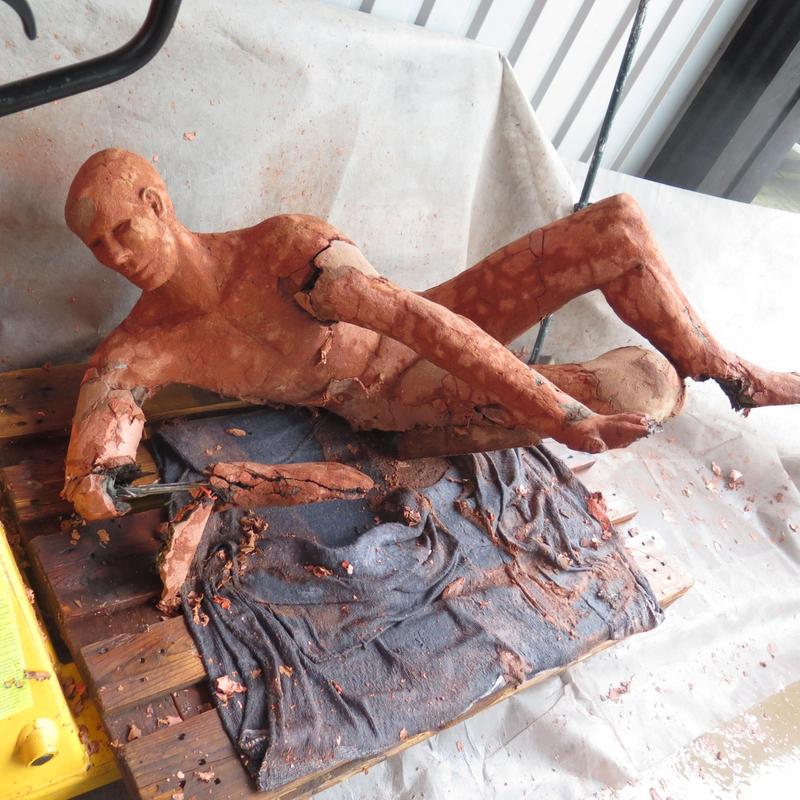
‘We had to temper our job to be in keeping with how it is now and the degree of wear it has,’ explains Tessa. ‘Today, the modelled surface isn’t as rough and tool-finished as it was. So we aimed to achieve a finish that would stand between what they are now and what they were.’ Progressing this, Tessa worked with Lyndsey Morgan ACR to finish the modelling stages.
Mounting issues
The team sought to place the limbs of the sculpture in their correct positions by a broad variety of means – lifting the sculpture on hoists and pinning them vertically to boards, while using photographs and surviving aspects to recreate missing details. ‘We had to cut off his right arm and reattach it three times, in order to get the angle correct – which was so frustrating,’ Tessa recalls.
To complicate matters, a mount was needed to hold the figures in a vertical position - but with existing internal damage, and the alteration of the limbs due to internal expansion, finding an effective placement was difficult, and work was held up several times. The challenge was to design effective mounts that would contend with anticipated movement between measurements and delivery in their finished state. Ultimately, Richard Rogers ACR designed the mounts and had them engineered; he then inserted, welded and bonded them in place, allowing the final placing of all limbs.
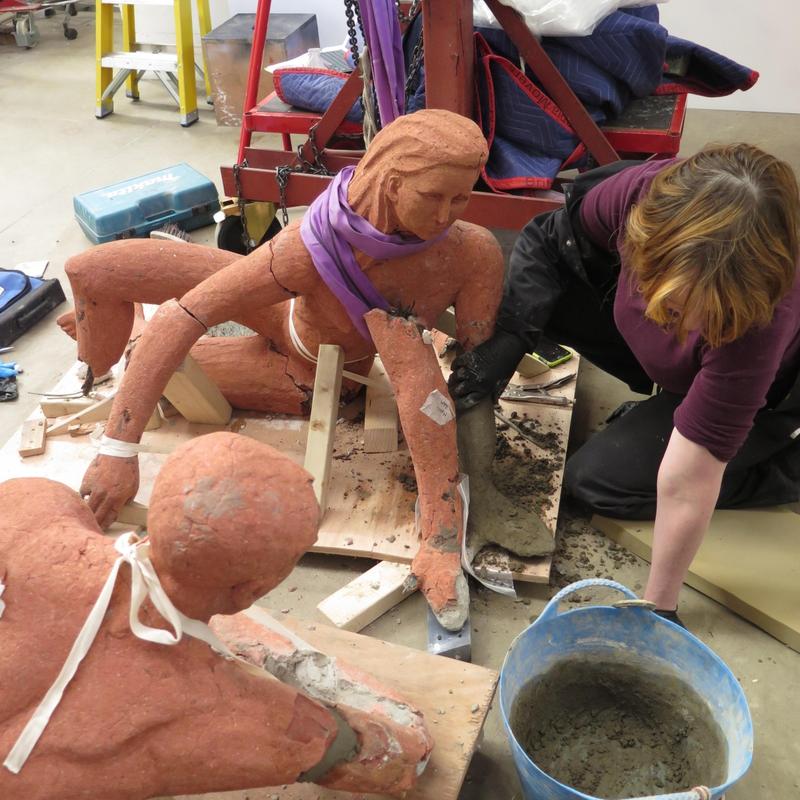
Photo: Historic England
With careful research and well-informed experimentation, the team was able to achieve a satisfactory finish, and positioned the figures in a posture reminiscent of their original state.
Media attention
Increasingly, substantial media interest came to influence new imperatives driving key aspects of the project. Tessa had asked that the pieces be with her for six to eight months in order to complete the research required to devise a treatment, which would then itself need to be tested and potentially re-formulated several times. During the course of the work, circumstances necessitated a shorter deadline for completion – shrinking the project down from eight to five months, and posing challenges for the busy diaries of everyone involved.
In the context of Tessa’s other active on-site projects, this made life interesting. ‘The tight deadlines didn’t compromise the job, but they meant everything had to be speeded up and when aspects of treatment were not successful it was fairly stressful,’ she explains. ‘The press attention was a whole new world. Usually, as conservators we keep away from the limelight. Our work is fairly private and often solitary. With this project, I was quoted in public speeches and published remarks – sometimes before the work was completed.’ This made for a particularly anxious course of work before the success of the treatments were assured – knowing the results, whether good or bad, would be the focus of broad public interest. ‘I was very aware that if this project did not go correctly that it would be in the full glare of the cameras.’
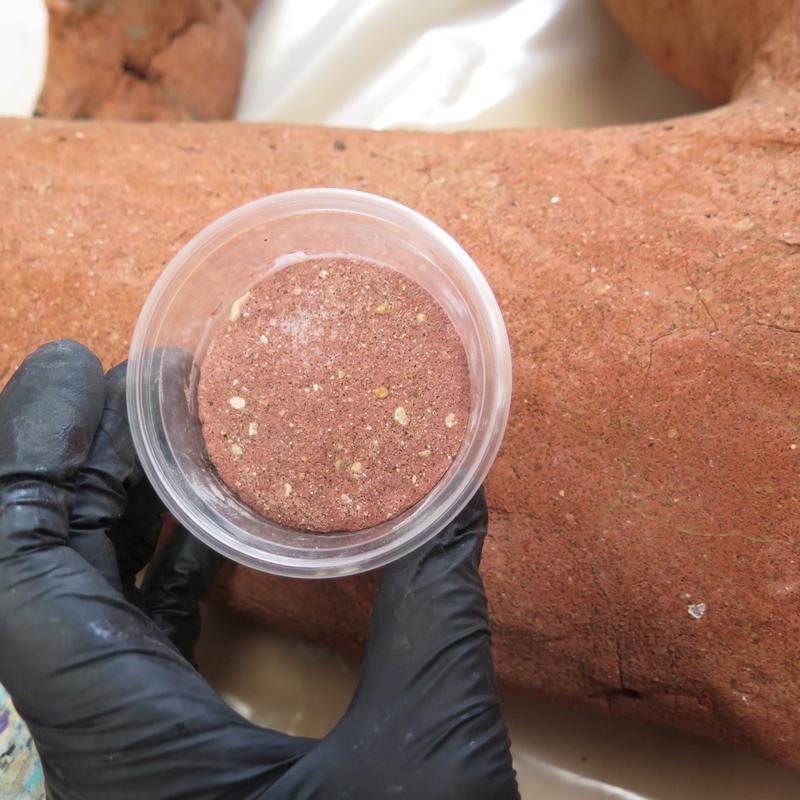
Media coverage helped to raise funds and widen awareness, bringing public interest to a high point. Those who saw the work in progress were keen to publish snapshots on social media and elsewhere – sometimes showing aspects of the work in its more delicate phases ‘Usually the work is confidential, so it was very different to have everything going in the public domain,’ she said. In any case, Tessa’s close working relationship with Historic England ensured the organisation was heavily involved and the project was well-documented from the start.
Bringing the past to life
The press attention reached a stirring climax when a BBC Radio4 crew popped into the studio with Peri’s elderly daughter, Ann, to visit the conservation work in progress. It was the first time Ann had seen the figures since she visited the Festival of Britain in 1951.
At the time of the visit, the figures were at a key stage in their conservation. The team had removed soil, and stripped off layers of paint to take the sculptures back to ‘the raw’ – revealing the original ochre finish in areas. ‘We were so surprised that they still had some of their ochre layer at all,’ says Tessa. ‘So at the time they looked clean and ready for assembly to me, but I was worried they would look terrible and quite worrying to anyone else.’
Tessa pulled together some resources on the work for the BBC crew, unsure of their intended angle: would they be interested in the technical story of the project, or its broadly varied other aspects? In the end, quite a different story unfolded – one that firmly underscored the capacity of the works to strongly resonate sixty years after they were first displayed.
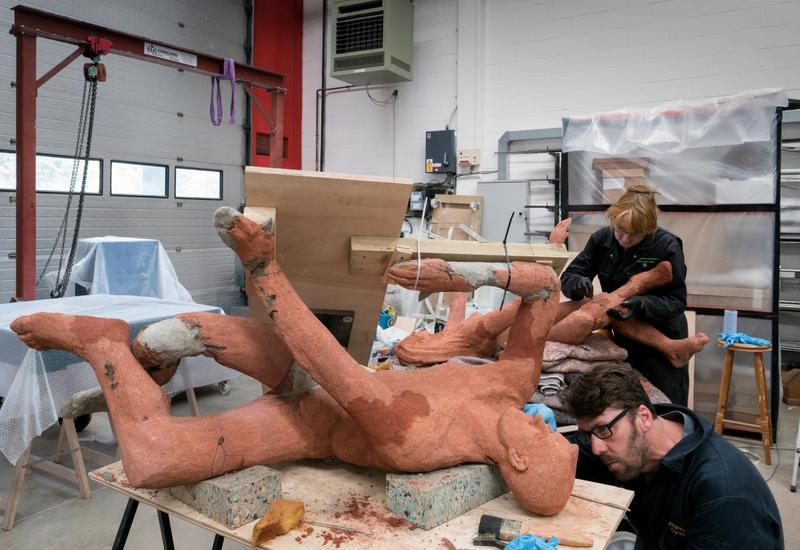
BBC Radio captured Ann’s reaction as she saw the pieces in Tessa’s studio and experienced a flood of memories, reminiscing about her father and describing her visits to his studio while he was working – inadvertently casting new light on enduring mysteries behind his working practices and methods. It was emotional connections such as these that made the project a particularly attractive thread for the media, says Celia at Historic England. ‘The miraculous discovery and intrigue evoked things in people’s memories and provided something to follow,’ she explains. ‘Human stories and human elements bring things to life.’ Gently touching and stroking the sculptures in the studio, Ann quietly mused that she had not felt so close to her father since his death in 1967.
The unveiling
Finally, after five months of work, the pieces were finished and the project was a huge success. In July, The Sunbathers was unveiled at the Royal Festival Hall, a short distance from their original location. The figures can be seen on a prominent pillar where they will be displayed to their best advantage – inside – on a permanent basis.
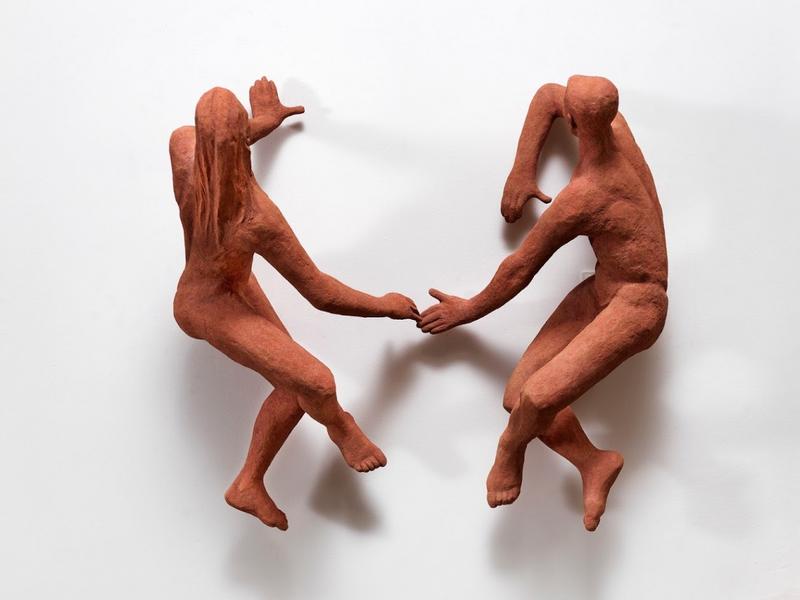
‘All the aspects of cleaning and reconstruction mounting came out well in the end. There were so many aspects to pull together whilst also running other large projects - resulting in some pretty tight timing, but it was finally okay,’ says Tessa with a massive sigh of relief. ‘I was very aware that a range of things could have gone wrong in this project, but when I met my colleague Andy Coxall with John Wilson from BBC4, and we saw it together for the first time on the wall, it was incredible - especially for Andy, who had last seen it during the limb reattachment, and John, who had seen it at the very worst phase. It was a huge relief and a WOW moment!’
Special thanks to Tessa Jackson ACR for all her help with this article, which appears in the October issue of Icon News.
Main image: The Sunbathers in situ outside Waterloo Station at the Festival of Britain in 1951. Photo: Historic England



